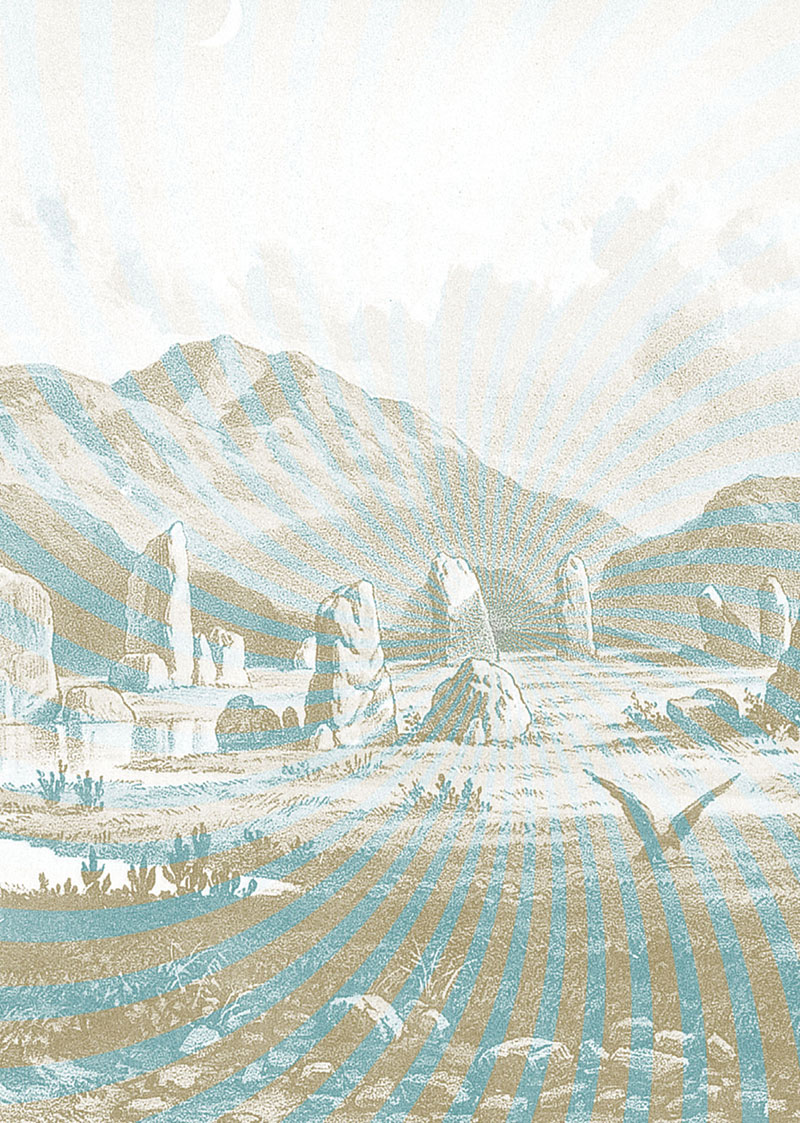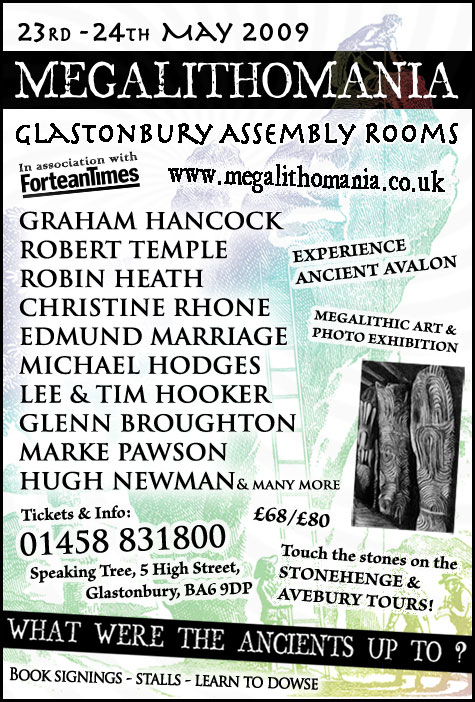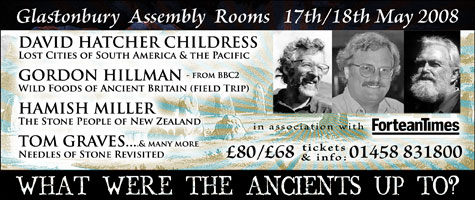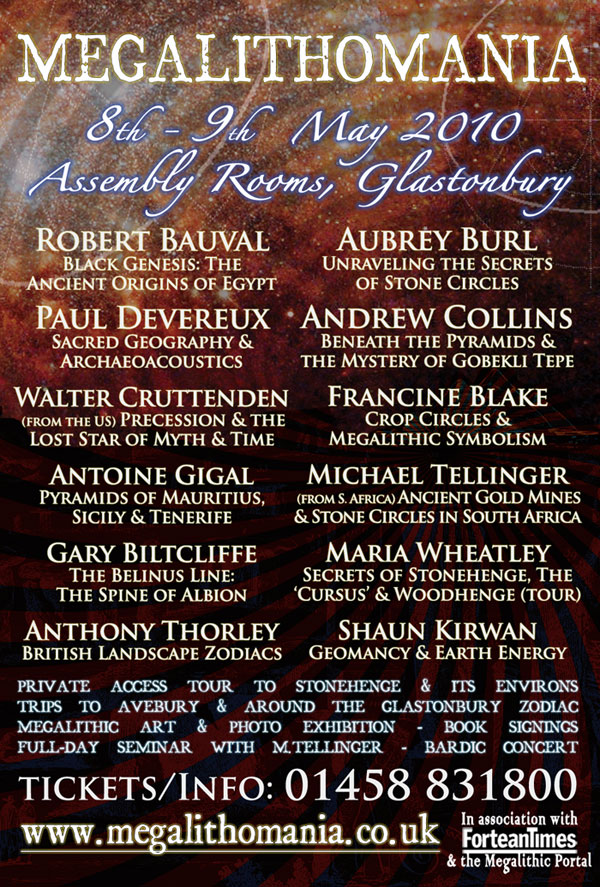




STONEHENGE TOUR TICKETS - £40, or £50 inc Coach from Glastonbury












The Gog Magog “maze” of 2001 showed images for eclipse prediction from the ancient Greek Antikythera device, that were not collected by modern scientists on Earth until 2005
Summary
The Gog Magog “maze” of July 2001 was one of the most important crop pictures in the history of this phenomenon, but has never been understood. Here we will explain how that amazing and complex crop picture showed certain images from the ancient Greek Antikythera device, which was once manufactured to serve as a small, portable, astronomical computer.
Using methods taken from the Antikythera device, that crop picture also predicted six solar eclipses from June 2001 to August 2091 as part of Saros series 127. Yet modern scholars on Earth did not learn that the Antikythera device was once designed to predict eclipses, until four years later in 2005!
Hence that Cambridge 2001 crop picture showed a highly detailed knowledge of our future, and also of our past, not available to local humans on Earth at the time when it appeared. In other words, it could only have been made through paranormal means, by extra-terrestrial scientists who are able to go beyond our current notions of space and time.
Two complex and amazing crop pictures appeared in the Gog Magog Hills, just outside of Cambridge in July 2001
For several weeks during July of 2001, two amazing and complex crop pictures appeared in the fields outside of Cambridge near Gog Magog Hills. Both of those pictures, quickly nicknamed the “Maze” and the “Angel”, showed an excellent and clean patterning of fallen crop, with no errors seen over hundreds of meters, and no signs of local human involvement (see www.cam.net.uk or cambridge-article-2003 or www.thetruthseeker.co.uk).
The general outlines of that “maze” first appeared on July 11, followed by more details over the next two weeks (see GogMagogHills2001). It matched the general shape of nearby Wandlebury Ring as seen from the air (see /wandlebury). The “angel” appeared next on July 25 in a neighbouring field. It showed clear geometrical similarities to the “maze”, although no one was sure at the time what either crop picture might be trying to tell us (see GogMagogHills2001b).
It would have been impossible to correctly interpret either crop picture before 2005!
In fact, it would have been impossible to correctly interpret either crop picture when they first appeared in 2001, because the necessary information by which to do so was not present on Earth until 2005, even among leading scholars in Cambridge nearby. Today however, we can see in retrospect that the Gog Magog “maze” shows certain images from an ancient Greek astronomical computer known as the “Antikythera device”:
Thus, highly detailed images of that ancient and corroded device had not yet been collected in 2001, by sophisticated methods such as digital radiography (see www.antikythera-mechanism.gr) or polynomial texture mapping (see www.hpl.hp.com/research/ptm). Such research did not begin until the autumn of 2005:
“During our first data-gathering phase in the autumn of 2005, several innovative technologies were used to reveal unknown elements of the mechanism. Then in the autumn of 2006, the Antikythera Research Project organized a conference in Athens to present their findings. Their results opened a new chapter in the understanding of this extraordinary mechanism” (see www.antikythera-mechanism.gr/project/overview or http://tseliosweb.com/antikythera.html or www.xtekxray.com/applications/antikythera_images.html).
We will discuss below which particular part of the Antikythera device that crop picture resembles most closely. But the key point here is that the Gog Magog crop picture appeared in 2001, four years before they even began their new imaging research, or five years before they presented their novel results in public. How could those mysterious crop artists know so much about the Antikythera device, long before leading scholars on Earth?
The ancient Greek Antikythera device
At certain locations in Greece, Sicily or Egypt around 200 BC, Archimedes and a small number of his colleagues were conducting a scientific revolution similar to the one which occurred in Europe only recently. As part of those technological efforts, they eventually constructed a small number of portable mechanical computers that would be easy to carry onto ships at sea, to help sailors navigate by looking at the Sun, Moon or stars (see www.newscientist.com or 2008-Computer-Antikythera).
One of those computers was the now famous “Antikythera device”, rediscovered in 1901 from remnants of an ancient shipwreck off the Greek island of Antikythera (see Antikythera_mechanism or antikythera-mechanism-eclipse-olympics). Once properly analysed during the autumn of 2005 by new and innovative imaging techniques, certain details of that Antikythera device seemed quite remarkable to modern scholars on Earth. Thus, the device seemed to demonstrate an advanced knowledge of modern astronomy, and of modern engineering, that had previously not been suspected to exist in ancient Greece (see antikythera-mechanism.gr or nature).
On the front face of that device, there were seven pointers that indicated sky locations of the Sun, Moon or five major planets, plus three other pointers that indicated the current lunar phase, current location in the Greek zodiac, or the current Egyptian calendar:
On the back face of that device, there were two large spirals with pointers which told about four other important cycles of time: (i) a Saros cycle of 18 years, essential to predict eclipses; (ii) an Exeligmos cycle of 54 years, also helpful to predict eclipses; (iii) a Metonic cycle of our Moon lasting for 19 years, and (iv) the Olympic cycle of athletic competition lasting for 4 years.
Its eclipse prediction spiral was able to count 38 possible times for eclipse, which were spread in time over one Saros cycle of 223 lunar months or 18 years:
A letter Σ (from ΣΕΛΗΝΗ meaning ‘Moon’) was written in each of those small boxes to indicate a lunar eclipse, while a letter Η (from ΗΛΙΟΣ meaning ‘Sun’) was written there to indicate a solar eclipse (see nature-2006 or NatureAntikytheraPaper)
Now when measured accurately, that Saros cycle of 18 years and 11 days actually contains an extra 8-hour period for every new eclipse. In other words, any eclipse which is repeated in calendar time by 18 years and 11 days will also be shifted forward in daily time by 8 hours, and further west in longitude along the Earth’s surface by 120°.
So in order to account for those extra 8 hours, the ancient Greeks also kept track of a triple Saros or “Exeligmos” cycle which lasted for 3 x 18 = 54 years (and 34 days). After such a long period of time, any Saros eclipse would return to almost the same daily time as 3 x 8 = 24 hours later, or almost the same longitude on Earth as 3 x 120o = 360o further west.
In fact, a small triangular wheel was added to the 18-year Saros dial of the Antikythera device for specifically that purpose, to help predict the daily time of eclipses over a full 54 years of calendar time:
That small wheel was divided into three triangular sections in order to represent three Saros cycles of 18 years. Likewise, any full turn of the wheel was meant to represent one Exeligmos cycle of 54 years.
A full reconstruction of the Antikythera device was only recently achieved in 2005 or 2006
A full reconstruction of the Antikythera device was achieved only recently in 2005 or 2006 by Michael Wright from the London Science Museum (see www.youtube.com or www.youtube.com or www.decodingtheheavens.com).
Some of the astronomical cycles which it encoded might seem somewhat difficult to understand, for a modern man or woman who lives in a big city, and seldom looks up at the stars; so we have provided a brief summary of its astronomy below (see SEsaros):
(i) One eclipse season = 173.31 days or 24.76 weeks, while one eclipse year = 346.62 days or 49.52 weeks.
(ii) One Saros cycle = 38 eclipse seasons = 38 x 173.31 = 6585.32 days, or equivalently 223 lunar months = 223 x 29.53 days, or equivalently 18.030 years = 18 years, 11 days and 8 hours.
(iii) One Exeligmos cycle = three Saros cycles = 3 x 6585.32 days = 19,755.96 days, or equivalently 54.090 years = 54 years and 34 days.
The crop picture from Gog Magog in July 2001 showed its 54-year Exeligmos wheel plus a nearby central spoke
Now when examined closely, the crop picture which appeared at Gog Magog near Cambridge in July 2001 seems to show a detailed image from one particular part of the Antikythera device: namely its 54-year Exeligmos wheel and a nearby central spoke, once used to hold a pointer:
Curiously enough, that small triangular wheel was subdivided further at Gog Magog into six thin circular rings, the sum of which create a “maze”:
Could those six rings be trying to tell us about six eclipses, that may be predicted by going twice around that Exeligmos dial for 0, 18, 36, 54, 72 or 90 years?

Quite nearby in the same crop picture, those unknown crop artists drew a further explanatory series of six square rings, with several small symbols for “eclipse” placed along the outside at angles of 0o, 90o, 180o or 270o:
That was as if to say: "The six rings of that 54-year Exeligmos dial are meant to show the geographical paths for six eclipses, as spread over all possible longitudes on the Earth".
Six total solar eclipses from June 2001 to August 2091
Now there was a total solar eclipse on June 21, 2001, just three weeks before the Gog Magog crop picture appeared. Indeed, two small parts of that crop picture seem to show the Earth and Moon in a fully eclipsed configuration:

One part shows the broad “penumbral” shadow of our Moon on the Earth during a total solar eclipse. The other part shows a much narrower “umbral” shadow.
Why would those crop artists wish to tell us about six eclipses, and not five or seven? Well, the eclipse of June 21, 2001 belonged to Saros series 127, of which only six total solar eclipses remain before they become partial in 2109 (see SEsaros127):
Table 1. Solar eclipses from 2001 to 2181 in Saros series 127
|
Date |
Type |
% totality |
|
May 20, 1947 |
total |
106 |
|
May 30, 1965 |
total |
105 |
|
June 11, 1983 |
total |
105 |
|
1. June 21, 2001 |
total |
105 |
|
2. July 2, 2019 |
total |
104 |
|
3. July 13, 2037 |
total |
104 |
|
4. July 24, 2055 |
total |
103 |
|
5. August 3, 2073 |
total |
102 |
|
6. August 15, 2091 |
total |
102 |
|
August 26, 2109 |
partial |
97 |
|
September 6, 2127 |
partial |
85 |
|
September 16, 2145 |
partial |
74 |
|
September 28, 2163 |
partial |
64 |
|
October 8, 2181 |
partial |
55 |
Could those six solar eclipses, spread in time from June 21, 2001 to August 15, 2091, be the ones to which that crop picture at Gog Magog refers?

Spiral shadows on the Earth
Paths of eclipse totality have been shown in crops many times, and usually for eclipses that belong to the same Saros series: for example at Hackpen Hill on July 4, 1999, at Knap Hill on August 5, 2001, or at West Kennett Longbarrow on June 9, 2008:

Those paths show a certain triangular symmetry, due to the extra 8 hours of daily time between any two Saros eclipses; and that is also why the Exeligmos wheel of the Antikythera device was divided into three triangular parts.
Yet when studied over thousands of years, the long-term path of any Saros series is not just triangular! Instead, it takes on the shape of a long spherical spiral or “loxodrome”, that begins in one polar region and ends in the other (see Rhumb_line or SEsaros or frequency):

And that is why each of those six solar eclipses will move closer in latitude to the south pole, as the totality of that series diminishes from 2001 to 2091:
Table 2. The final six total solar eclipses of Saros series 127
|
Date of eclipse |
Time (UT) |
Longitude (degrees) |
Latitude (degrees) |
Azimuth (degrees) |
|
June 21, 2001 |
12:05 (0 hrs) |
3 East (0) |
11 South |
355 |
|
July 2, 2019 |
19:25 (+7 hrs) |
109 West (-112) |
17 South |
359 |
|
July 13, 2037 |
02:40 (+15 hrs) |
139 East (-224) |
25 South |
3 |
|
July 24, 2055 |
09:57 (+22 hrs) |
26 East (-337) |
33 South |
8 |
|
August 3, 2073 |
17:15 (+29 hrs) |
89 West (-452) |
43 South |
14 |
|
August 15, 2091 |
00:35 (+36 hrs) |
151 East (-508) |
56 South |
23 |
Indeed, when plotted upon a map of our southern hemisphere, those six solar eclipses will trace out an inward spiral headed for the south pole, just as shown schematically by lines in the Gog Magog “maze”:

So that is why they divided that Exeligmos wheel into six circular parts: in order to show us the inward spiral created by six Saros eclipses!
Azimuth and longitude
Now in order to compare quantitatively the results of our astronomical study with other features shown at Gog Magog, first we need to define two parameters called “azimuth” and “longitude” that are commonly used to characterize eclipses:

The term “azimuth” tells where the Sun is located in a north-east-south-west sense at maximum eclipse. The term “longitude” tells where a shadow of our Moon is located along the Earth’s surface, in an east-to-west sense at maximum eclipse.
Now we can analyse that crop picture in precise detail. Both of those small circles or arcs, located just outside of the large circles labelled “1” or “6” in the diagram below, provide correct azimuths of 355o or 23o for total solar eclipses which will occur in 2001 or 2091:

A nearby group of six square rings has been used to provide internal field values of 0o, 90o, 180o or 270o for the picture as a whole.
Another small circle from the lower part of that crop picture gives the correct azimuth of 145o for a lunar eclipse which occurred on July 5, 2001, or just one week earlier:

Finally, six short horizontal lines within that “maze” give correct longitudes (East) of 3o, 251o, 139o, 26o, 271o or 151o for all six solar eclipses from 2001 to 2091, as listed in Table 2 above:

We have learned here about six eclipses, but why would they wish to show us such things?
We seem to have learned a lot here about six eclipses, and how the ancient Greek Antikythera device could have predicted them. But given the potential importance of extra-terrestrial contact with Earth, why are we being shown such mundane things?
To a scientist, their logic seems quite clear. For many years after its rediscovery in 1901, no one knew what tasks the enigmatic Antikythera device was originally designed to perform. Some people speculated by 1951 that it could have been meant to track motions of the stars or planets. Others by 1974 thought that it could have been meant to keep track of calendar time, using sky motions of the Sun and Moon. The somewhat unlikely notion that it could have been used to predict eclipses was not suggested until 2005 or 2006 (see www.newscientist.com):

Yet those unknown and mysterious crop artists, who drew certain images from the Antikythera device in a field outside of Cambridge during July 2001, were apparently fully aware that the Antikythera device could predict eclipses, four to five years before leading scholars on Earth!
The impossibility of local human construction
In other words, such a crop picture could not possibly have been made by local human fakers on Earth, because the detailed scientific knowledge to design such a picture was not present on our world at the time when it appeared.
The relevance of that Gog Magog crop picture to the English university town of Cambridge also seems clear:
“In 1951, British science historian Derek de Solla Price undertook a preliminary investigation of the mechanism, and concluded that it might have been used to track motions of the stars or planets. Later in 1974, while working in Cambridge, he published 'Gears from the Greeks' which was a landmark study of the Antikythera device" (see talks.cam.ac.uk).
"There was an exhibition dedicated to the Antikythera device at the Whipple Museum in Cambridge during the spring of 2009" (see antikytheraexhibition).
And so once again, the plausible lies of certain crop-circle debunking groups have come to an end, for anyone willing to consider the evidence with an open mind. A few additional web links have been provided below, for any interested readers who may wish to consider the evidence as a whole from 1990 to 2008.
Charles Reed (with helpful suggestions from Mike Reed)
Appendix 1. The highly scientific and often arcane subject matter of modern crop pictures.
|
Year |
Important pictures |
|
1990-1993 |
planetary conjunction or eclipse diagrams using long-forgotten symbols from Ptolemaic astronomy |
|
1999 |
use of those same symbols to tell us about a grand conjunction of the planets on May 5, 2000 |
|
2000 |
complex image of a magnetic field made for visiting NASA scientist Alan Holt |
|
2001 |
use of the Antikythera device to predict eclipses (not known to Earth scientists until 2005) reply to Carl Sagan’s 1978 Arecibo radio message |
|
2002 |
ASCII-coded message telling us to beware of an alien “grey” race, and “much pain but still time” spectacular image of curved DNA |
|
2003 |
current planetary astronomy |
|
2004 |
spectacular image of the famous Aztec Sunstone, to remind us that the Mayan Long Count calendar will end in 2012 |
|
2005 |
future prediction of Comet Holmes in October 2007 |
|
2006 |
space time wormholes, ring holes or time travel devices |
|
2007 |
conjunction of Venus with our Sun on August 18, images of the Mayan Sun-Venus calendar |
|
2008 |
pi to ten digits in the style of Archimedes solar eclipse on August 1, lunar eclipse on August 16, and the 18-year Saros cycle image of our solar system on December 23, 2012 when the Mayan Long Count calendar will end |
1990-1993: time2007f or CheesefootHd-Letters (“check your charts when you have time: same patterns are in the sky”)
1999: time2007f
2000: www.rense.com
2001: arecibo or www.youtube.com or www.youtube.com
2002: glyphs or time2007o or wormholetechnology or www.youtube.com or Crooked_Soley or crabwood
2003: time2007e and unpublished observations
2004: www.youtube.com
2006: www.cropcircleconnector.com/anasazi/time2007k.html or www.youtube.com
2007: time2007c or www.youtube.com or www.youtube.com
2008: Archimedespi or /080808 or www.youtube.com or www.youtube.com
Other important aspects of the Gog Magog crop picture: such as the detailed structure of its “maze”, the meaning of its Greek symbol “zeta”, and other crop pictures from 2001 that might relate to it, will be discussed in Appendices 2-4 to be added soon.
Photographic credit for some of the images used above should be given to Steve Alexander or Stuart Dike.
P.S. In order to ensure that all new crop pictures from the years 2009-2012 will be freely available to the public, and to help pay the download fees for millions of ordinary people to see such messages, it would be really helpful if any interested readers could join the Crop Circle Connector website on www.cropcircleconnector.com/anasazi/ml.html.


